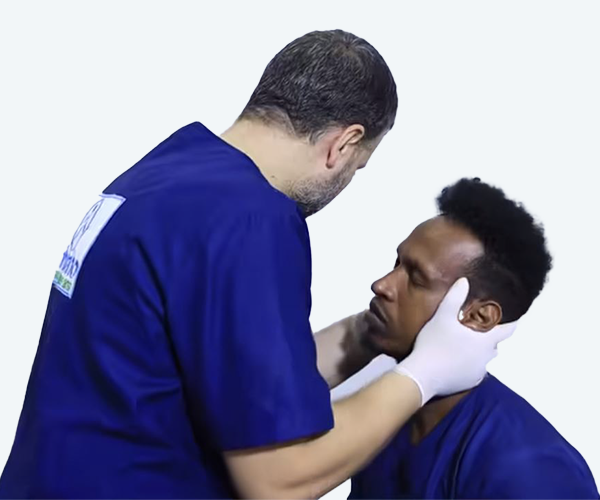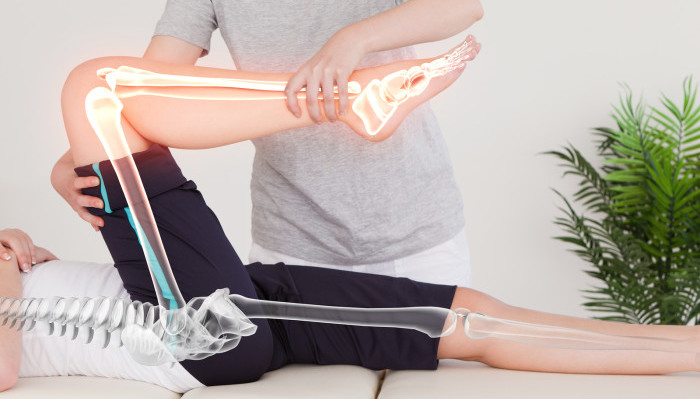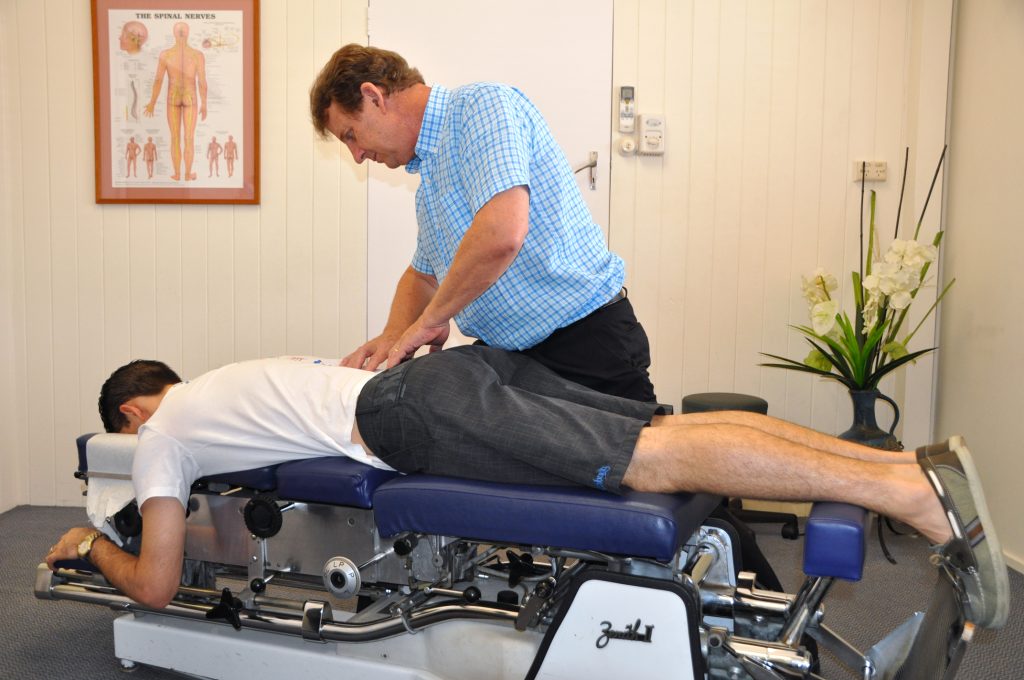Chiropractic is a licensed health care profession that emphasizes the body’s ability to heal itself. Treatment typically involves manual therapy, often including spinal manipulation. Other forms of treatment, such as exercise and nutritional counseling, may be used as well.
Chiropractic care is a patient-centered, non-invasive, hands-on, regulated health care profession focused on your spine, muscles, joints and nervous system. Chiropractors use the best available evidence and clinical expertise to diagnose issues that affect your body’s movement. They treat them without medication or surgery and prevent them from returning. Chiropractic care can also promote health and improve your quality of life, as well as alleviate pain.
Questions about the Chiropractic!
A chiropractor treats many conditions affecting the nervous system and musculoskeletal system. Think of a chiropractor as a doctor who cares for any kind of muscle, bone or joint pain or dysfunction. The most common reasons for a chiropractic adjustment include:
- Lower back pain.
- Neck pain.
- Muscle pain.
- Headaches.
In addition, chiropractors can treat musculoskeletal pain anywhere in your body: in your head and jaws, shoulders, elbows and wrists, hips and pelvis and your knees and ankles.
At your first visit, your chiropractor will discuss your medical history and perform a physical exam. If needed, they’ll order diagnostic imaging tests done to understand more about your musculoskeletal system including:
- X-rays.
- Computed tomography (CT) scan.
- Magnetic resonance imaging (MRI) scan.
After learning more about your symptoms and what might be causing your discomfort, your chiropractor will develop a unique treatment plan based on exam findings and the results of your tests.
A chiropractic adjustment is a therapeutic treatment where a licensed chiropractor uses their hands or special instruments to manipulate joints in your body. This treatment is also called spinal manipulation or joint manipulation. A chiropractic adjustment can help reduce pain, correct your body’s alignment and how your body functions physically. Chiropractic adjustments offer treatment that complements traditional medical care you receive.
1. Improves neck pain
Neck pain is a common problem, especially if you sit for many hours a day, frequently bend your neck to use your phone, or have poor posture. A chiropractor may help ease your neck pain by realigning your spine and easing tension in your neck muscles.
An older 2012 study found that 12 weeks of spinal manipulation was more effective than medication at treating non-specific neck pain in a group of 272 adults at 8-, 12-, 26-, and 52-week follow-ups.
A 2019 studyTrusted Source found that cervical spine manipulation may help decrease neck pain in the short-term by modifying levels of neuropeptides in your blood. Neuropeptides are proteins made in your nervous system that function as neurotransmitters or hormones.
2. Reduces reliance on opioid pain relievers
People with chronic pain are often given prescriptions for opioid pain relievers to help manage their discomfort. However, undergoing chiropractic treatment may lower your need to take these pain relievers.
A large 2020 studyTrusted Source compared the number of prescriptions for opioid pain relievers filled for adults who visited just their doctor or who visited both a chiropractor and their doctor to treat spinal pain.
The study found that adults who visited a chiropractor were less likely to get an opioid prescription filled for their pain compared to those who only saw their doctor.
3. Eases back pain
Chiropractic treatment may be a good alternative to more invasive alternatives like surgery or injections for treating short-term or chronic back pain.
The American College of Physicians recommends that doctors encourage people with chronic low back pain to first seek non-medication treatments before taking medication to treat their pain. Some of the treatment options recommended include:
- spinal manipulation (chiropractic care)
- exercise
- acupuncture
- yoga
- tai chi
- progressive muscle relaxation
- meditation
A 2017 review of studiesTrusted Source found that spinal manipulation was associated with moderate improvements in short-term back pain and function compared to placebo treatment for up to 6 weeks.
4. Possible reduction of osteoarthritis symptoms
Osteoarthritis pain is caused by the degeneration of the cartilage in a joint that causes the ends of your bones to rub together. Some types of chiropractic adjustments may help align your joints and reduce how much your bones rub together.
There hasn’t been a lot of research on the benefits of chiropractic manipulation for osteoarthritis. However, a 2020 animal studyTrusted Source found some evidence that chiropractic manipulation may help slow down the progression of arthritis by improving the status of cartilage, bone, and the joint capsule.
5. Eases headache symptoms
Spinal manipulation may be effective at treating tension headaches and headaches that originate in your neck.
A 2016 studyTrusted Source found that 6 to 8 sessions of cervical and upper thoracic spine manipulation were more effective than movement and exercise for relieving pain in people with chronic headaches. This was still the case at a 3-month follow-up.
6. More affordable treatment for chronic back pain
Chiropractic treatment may be a cheaper alternative to conventional treatment for chronic low back pain.
In a 2016 study, researchers looked at the potential financial benefits of chiropractic treatment for Medicare recipients with chronic back pain.
The researchers found that people who received chiropractic treatment had a lower overall treatment cost. The study also determined that their treatment duration was shorter than that of those who had conventional medical treatment.
7. High satisfaction
Studies have generally reported relatively high levels of satisfaction with chiropractic treatment.
For example, in a 2015 studyTrusted Source, researchers found that a group of 544 people in chiropractic care reported a high level of satisfaction.
Also, 92 percent of the people in this study had improvements in their pain, and 80 percent reported improvements in their ability to move around.
8. Reduces scoliosis symptoms
Chiropractic care may help improve the Cobb angle of people with scoliosis. The Cobb angle is a measurement of how much side-to-side deformity there is in the spine.
A 2016 studyTrusted Source found that the Cobb angle in a group of five children with scoliosis improved after 8 weeks of chiropractic treatment. Noticeable improvements were seen after 4 weeks of treatment.
9. Helps improve posture
Undergoing chiropractic treatment may potentially help correct poor posture, especially if your poor posture is caused by too much sitting.
A 2017 case studyTrusted Source examined the effect of chiropractic treatment on a 27-year-old woman suffering from back pain, neck pain, and headaches caused by hyperkyphosis posture. Hyperkyphosis is commonly known as a hunchback posture.
After 30 treatments over 6 months, she showed a significant improvement in her posture and pain relief in both her head and neck.
10. May help athletic performance
Spinal adjustments may potentially improve your athletic performance. This could be due to increased joint mobility, reduced pain, and less tissue restriction.
However, there are still some questionsTrusted Source about whether spinal adjustments improve sports performance. A 2019 review of studiesTrusted Source found that it didn’t improve performance in people without symptoms.
Chiropractic adjustments may be effective when used to deal with pain caused by an injury.
Many people feel almost immediate relief from symptoms after a chiropractic adjustment. After treatment, you might feel sore for 24 hours.
The goal of a chiropractic adjustment is to restore your health over the long term, rather than to relieve your symptoms short term. Your chiropractor will encourage you to learn about new ways to position your body at your desk, when you’re standing and moving and when you’re in bed. They might also recommend incorporating stretches into your daily routine. These long-term tips can help prevent future problems.
It’s important to inform your primary care physician about any pain you’re experiencing, whether recent or chronic (lasting more than three months). Your primary care doctor can rule out potentially serious problems that need treatment beyond a chiropractic adjustment.
Maintaining Your Quality of Life









